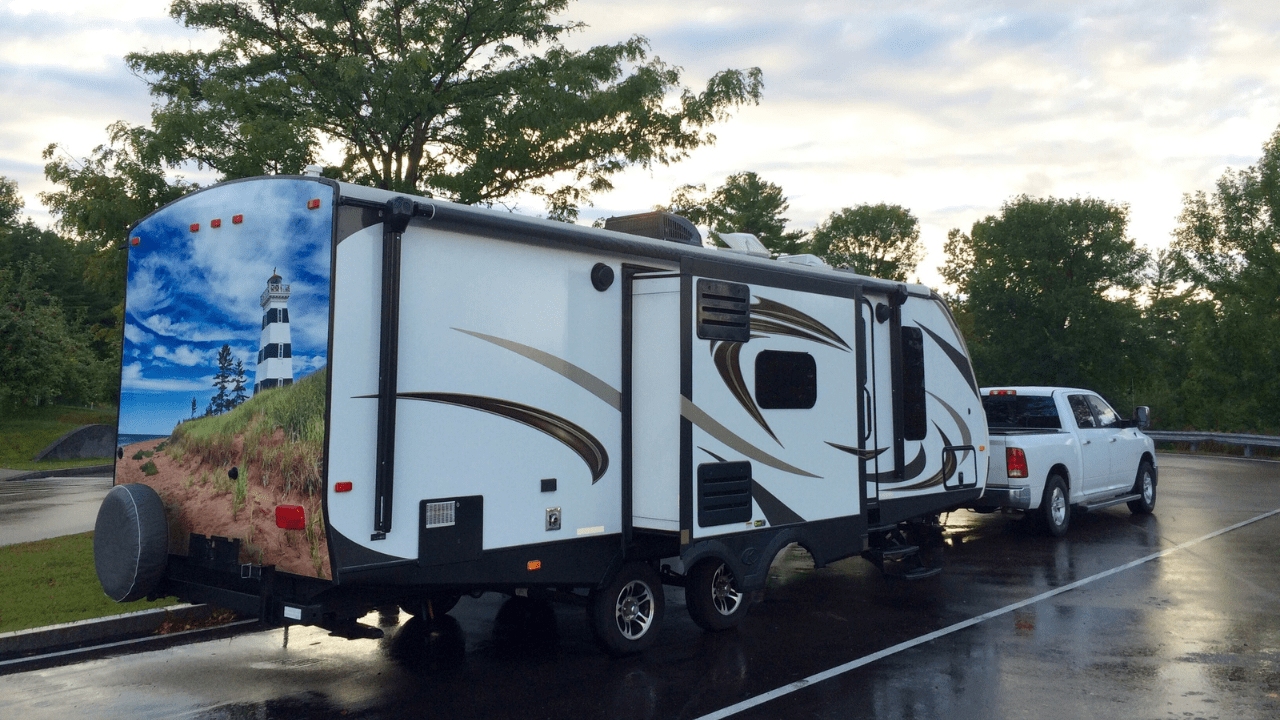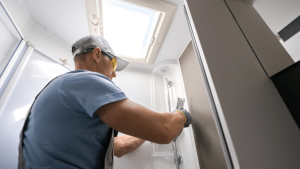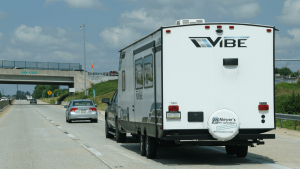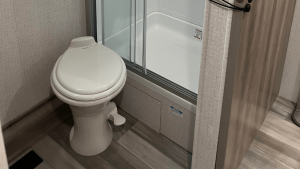Camper FAQs is reader-supported. Buying through links on our site may earn us an affiliate commission. As an Amazon Associate I earn from qualifying purchases.
Some RV upgrades are purely for comfort or style, while others can actually save you money over time.
The right modifications can cut your ongoing costs, help you avoid expensive repairs, and even open up opportunities for cheaper camping.
Here are six that tend to pay for themselves, often sooner than expected.
Note: Actual results will vary depending on your camping style, the type of RV you have, how often you travel, and local fuel or electricity costs. Some upgrades may not result in noticeable savings for every RVer, but many find them worthwhile for the added convenience or peace of mind.
1. Swap Interior Bulbs to LEDs
A standard 921 incandescent bulb in many RVs draws between 16.8 and 18 watts. A quality 921 LED replacement draws around 2 watts while producing similar brightness. Keep in mind, LED replacements vary widely in price, from about $1.80 in bulk orders to roughly $11 per bulb in small packs.
If you replace 20 bulbs:
- Power drop per bulb is 16 watts, or 320 watts total
- Using the lights for three hours a night equals 0.96 kWh saved per night
Savings example:
When boondocking, if you run a small inverter generator like the Honda EU2200i, you can avoid running it for those extra lighting hours. Honda rates this generator at roughly 0.12 gallons per hour at light load, so cutting three hours of runtime saves about 0.36 gallons of fuel per night. At $4 per gallon, that is about $1.40 per night.
At that rate, an LED conversion costing around $100 pays for itself in 70 to 75 boondocking nights. On metered shore power, savings are smaller but still measurable.
2. Add a Soft-Start to Your Roof A/C
Air conditioners pull a large surge of current at startup, sometimes 2 to 3 times higher than the running draw. A soft-start module can cut that surge by 65 to 75 percent, allowing many RVers to run a 13,500 BTU A/C on a smaller 2,200-watt generator instead of upgrading to a heavier and more expensive 3,000-watt model.
Savings example:
A Honda EU2200i typically costs around $1,199
A Honda EU3000iS costs about $1,999
A quality soft-start device runs around $299
If the soft-start allows you to keep the smaller generator instead of buying the larger one, you avoid an $800 generator upgrade. After subtracting the $299 cost of the soft-start, you are $500 ahead immediately while also keeping a lighter, easier-to-store generator.
3. Install Rooftop Solar and a LiFePO₄ Battery
A solar setup with a lithium iron phosphate (LiFePO₄) battery reduces generator use and can make more free camping possible.
Typical setup cost:
400-watt RV solar kit: $400 to $700
12V 200Ah LiFePO₄ battery: around $700
Total: about $1,100 to $1,400
*Actual output depends on panel orientation, shading, controller type, and sun hours at your location.
Savings example:
If this setup allows you to replace 15 paid campground nights at an average of $40 per night with free public-land camping, that is $600 saved per year. Add about $20 per year in generator fuel savings (based on the lighting example’s 0.36 gallons per night) and you are looking at $620 saved annually.
At that pace, the system pays for itself in about two years, faster if you camp off-grid more often. And they’re easy to install if you follow our solar panel installation guide.
4. Add a Tire Pressure Monitoring System (TPMS)
Underinflated tires can lower fuel economy and cause faster tire wear. A TPMS alerts you before pressure or temperature reaches a dangerous level.
Quality TPMS kits range from about $239 to more than $759. Pricing varies with sensor count, cap versus flow-through sensors, display type, and whether a signal repeater is included for longer rigs.
Savings example:
Fuel economy can drop by roughly 1 percent for every 5 psi of underinflation. If your tow vehicle averages 10 mpg over 10,000 miles, that 1 percent loss wastes about 10 gallons of fuel per year. At $4 per gallon, that is about $40 annually. Running correct pressure also supports better tire life over time, not just fuel economy.
The bigger savings come from avoiding blowout damage. A single blowout can cost thousands in repairs if a shredded tire damages your RV’s sidewall, wiring, or undercarriage. Avoiding just one blowout covers the cost of a TPMS many times over.
Insurance note: standard RV policies usually cover damage caused by a blowout to the coach or trailer, not the tire itself. Tire and wheel protection plans are separate products that may cover the tire replacement.
5. Improve Window Shading and Ventilation
Direct sunlight through RV windows can quickly raise interior temperatures, making the air conditioner work harder. Using exterior covers, reflective inserts, or quality shades reduces this heat gain. A good roof vent fan can often keep the RV comfortable without running the A/C.
Savings example:
Replacing a few hours of A/C use with a vent fan during warm evenings saves both electricity and generator fuel. Fans draw a fraction of the power of an air conditioner, so each hour you swap from A/C to fan cooling lowers your energy costs.
6. Get a Proper Alignment and Monitor Tire Wear
Misaligned axles or improper load distribution can cause uneven tire wear, shortening tire life. Considering that many RV tires cost $180 to $250 each (larger motorhome tires can be significantly higher), extending their life even one extra season can mean significant savings.
Savings example:
Replacing four tires on a tandem-axle trailer at $200 each costs about $800. If proper alignment and balanced loading let those tires last one extra season before replacement, that’s $800 you don’t have to spend as soon. Regular inspections after hitting potholes, curbs, or other impacts can help prevent problems before they become expensive.







Write a comment